Barracuda XDR retrieves Audit Logs, Sign In Logs, and Activity Logs from Microsoft Azure. These items are read from the Azure Event Hub.
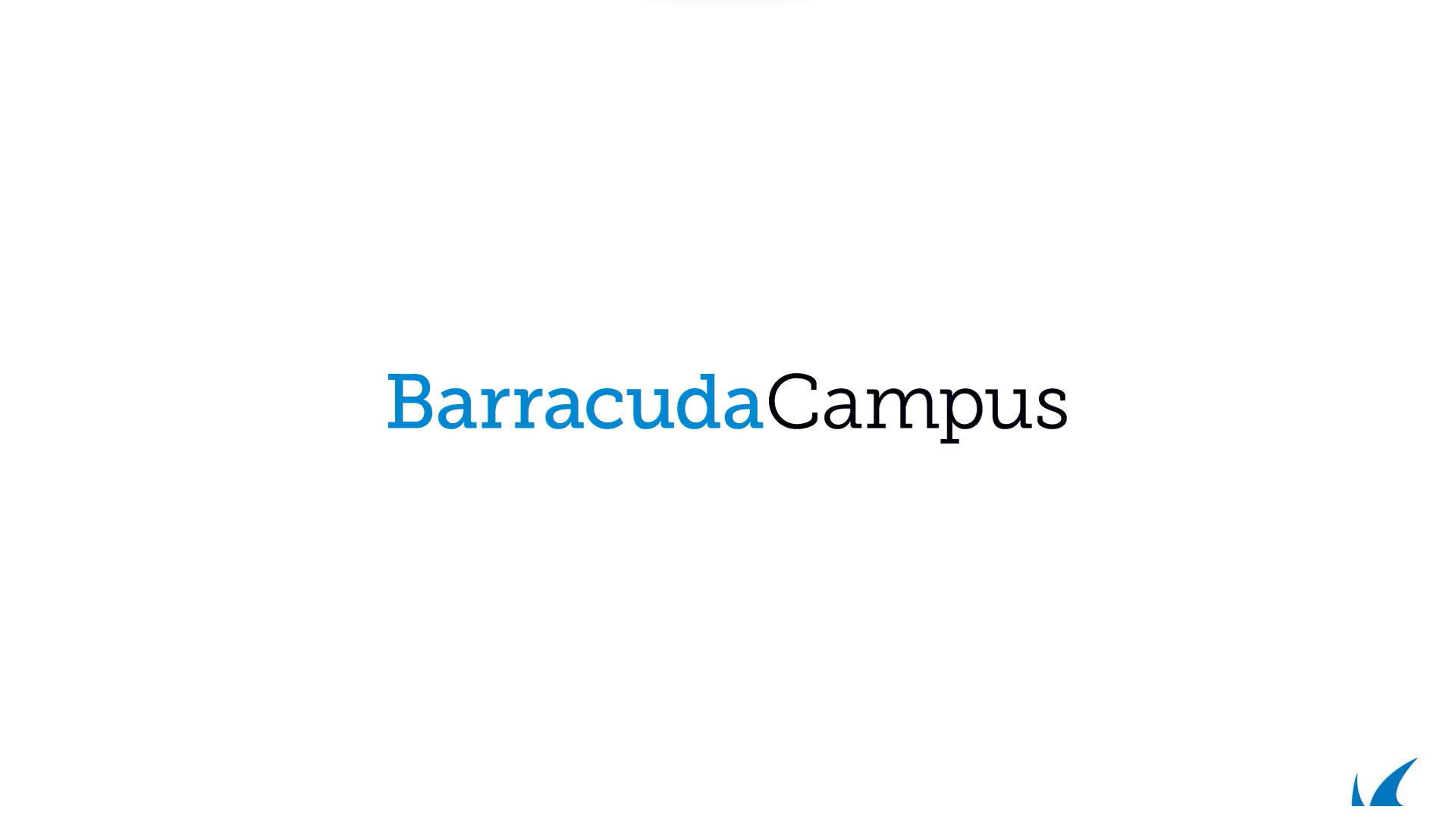

Videolink:
https://campus.barracuda.com/Requirements
- An Azure Premium P1 or P2 license is required.
Integrating Microsoft Azure requires you follow these procedures, below:
- Part 1: Setting Up Azure Event Hub
- To create Event Hub Namespaces
- Part 2: Configuring Storage Accounts
- To initialize Storage Accounts
- To set up Event Hub Entities
- To set up an Event Hub Shared Access Policy
- Part 3: Updating Diagnostic Settings
- To update diagnostic settings for the sign in log
- To update diagnostic settings for for the audit log and activity log
- To set up Microsoft Defender for Cloud
- Part 4: Barracuda XDR Dashboard Setup for Azure
Part 1: Setting Up Azure Event Hub
To create Event Hub Namespaces
- Navigate to the Azure Event Hub.
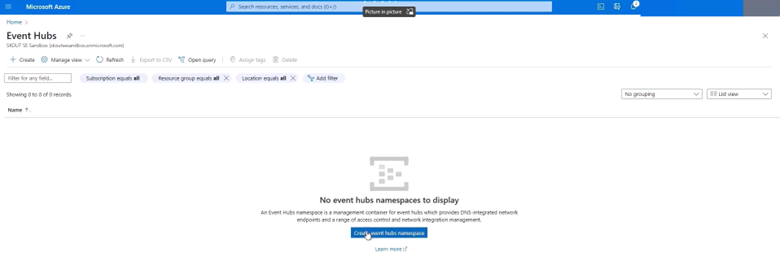
- Create three event hub namespaces dedicated to each of the following:
Audit Logs
Sign In Logs
Activity Logs
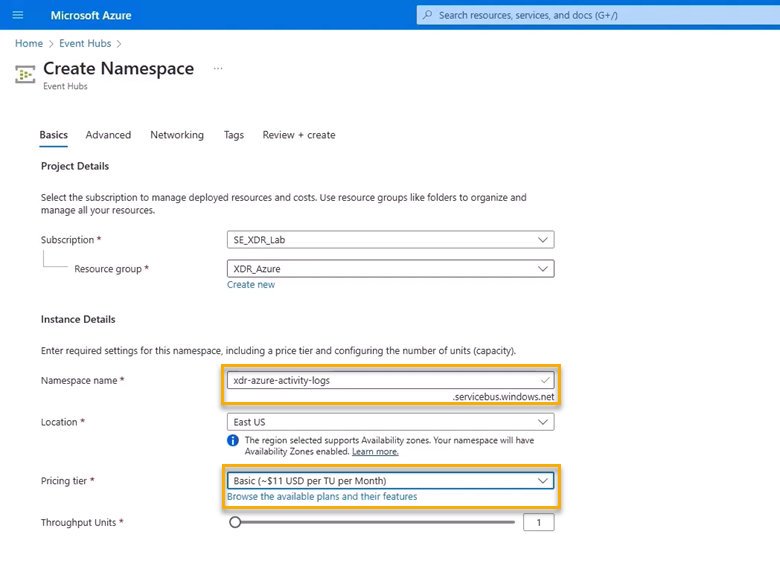
Click Review and Create.

Part 2: Configuring Storage Accounts
Configuring storage accounts requires the following procedures, below:
- To initialize Storage Accounts
- To set up Event Hub Entities
- To set up an Event Hub Shared Access Policy
To initialize storage accounts
- Navigate to Storage Accounts.
- Audit Logs
- Sign In Logs
Activity Logs

- Click Review and Create.
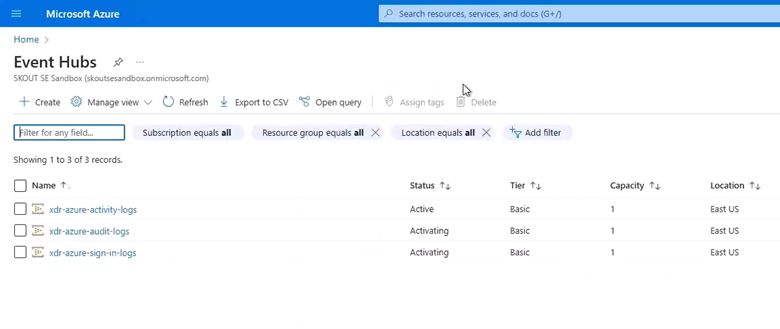
To set up Event Hub Entities
- In Microsoft Azure, navigate to Event Hubs.
- In Event Hubs, select the check box of an Event Hub Namespace that you created in the previous procedure.

Click Create Event Hub.
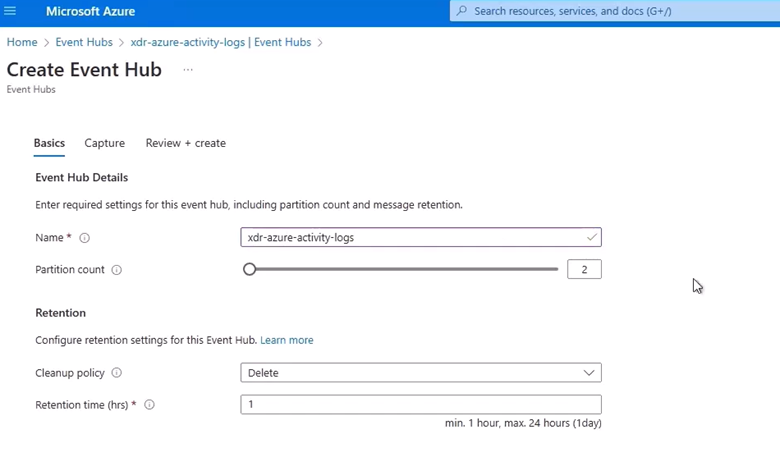
- Repeat steps 2-3 for the rest of the namespaces.
Click Review and Create.
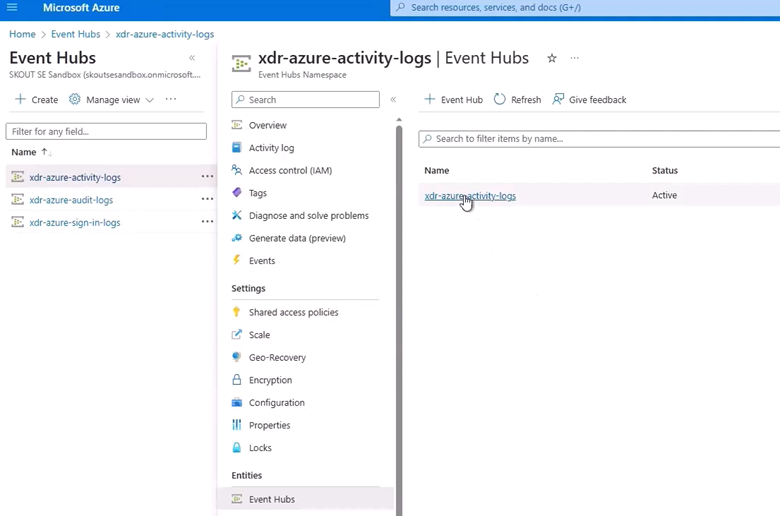
To set up an Event Hub Shared Access Policy
In Event Hubs, on the right, click the link Event Hub Namespace that you created in the previous procedure.
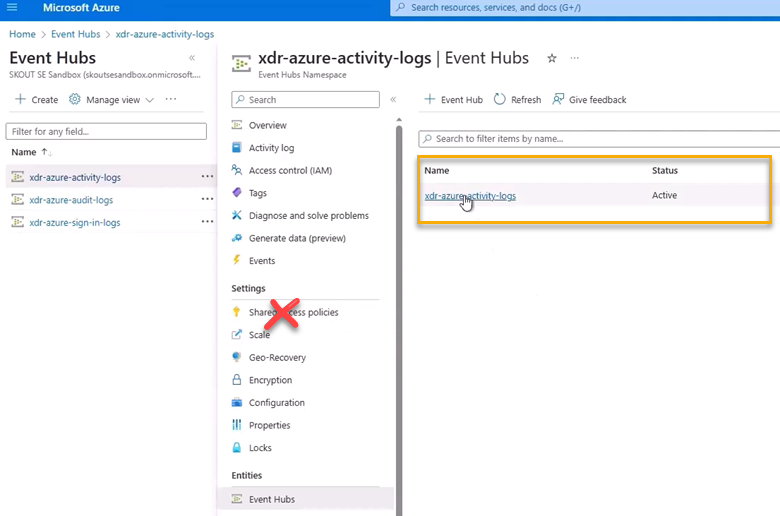
- Click Shared Access Policies.
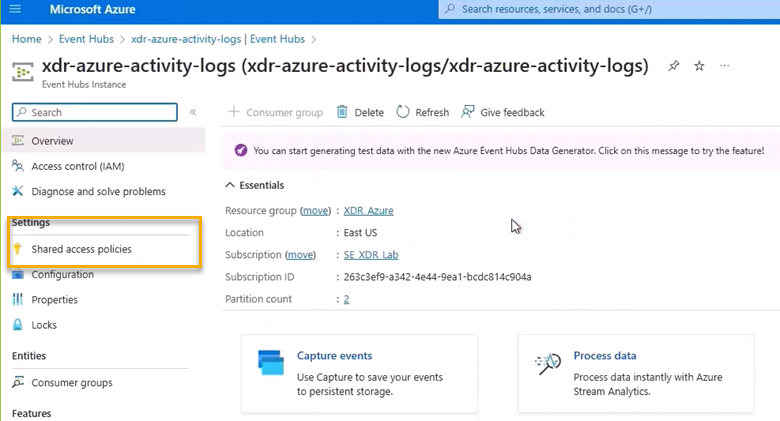
- Click Add.

- In Add SAS Policy, in Policy Name, type the name of the namespace.
- Select the Manage checkbox.
- Repeat steps 1-5 for the rest of the namespaces.
Part 2: Updating Diagnostic Settings
To update diagnostic settings for the sign in log
- Navigate to Azure Active Directory.
- In the Monitoring section, click Sign-in logs.
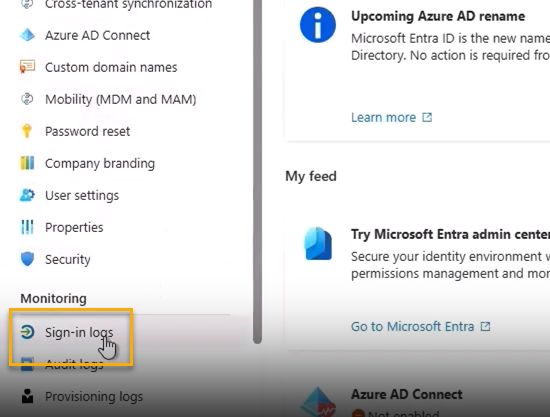
- Click Export Data Settings.
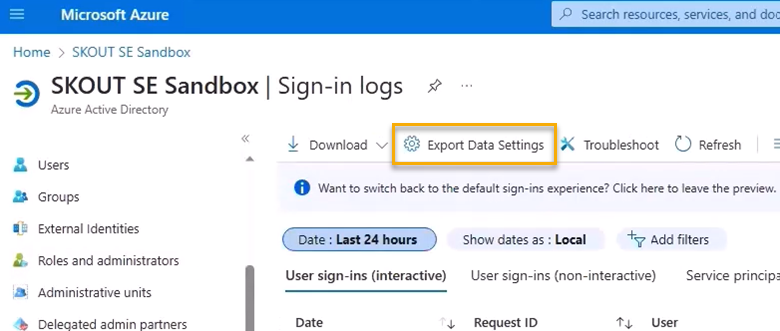
- Click Add diagnostic setting.
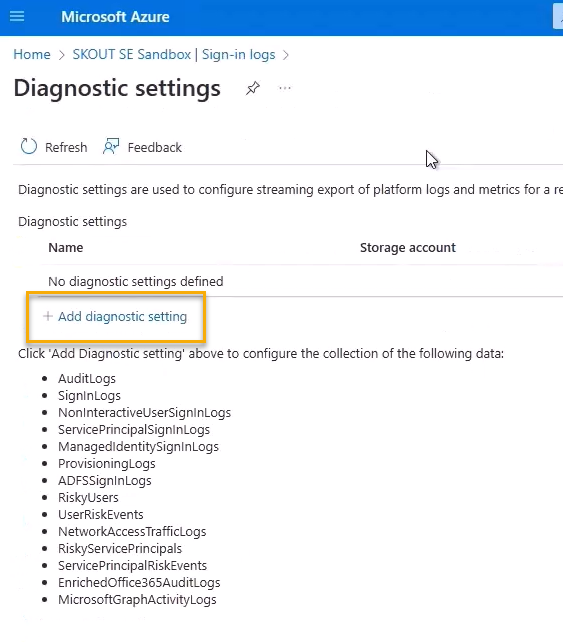
- Do the following:
- In Diagnostic setting name, type the name of your sign in log.
- Select the following checkboxes:
- SignInLogs
- NonInterctiveUserSignInLogs
- ServicePrincipleSignInLogs
- ManagedIddentitySignInLogs
- Stream to an event hub
- Select the correct Subscription and Event hub namespace (Ex: xdr-azure-sign-in-logs).

- Click Save.
To update diagnostic settings for for the audit log and activity log
- Navigate to Azure Active Directory.

- In the Monitoring section, click Audit logs.
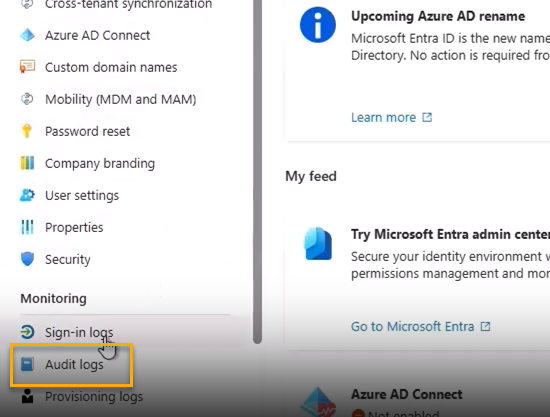
- Click Export Data Settings.

- Click Add diagnostic setting.

- Do the following:
- In Diagnostic setting name, type the name of your audit log namespace.
- Select the following checkboxes:
- AuditLogs
- Stream to an event hub
- Select the correct Subscription and Event hub namespace (Ex: xdr-azure-audit-logs).

- Click Save.
- Repeat steps 1-6 for the activity log.

To set up Microsoft Defender for Cloud
- Navigate to Microsoft Defender for Cloud.
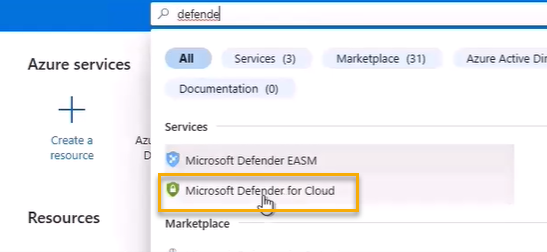
- Under Management, click Environment settings.
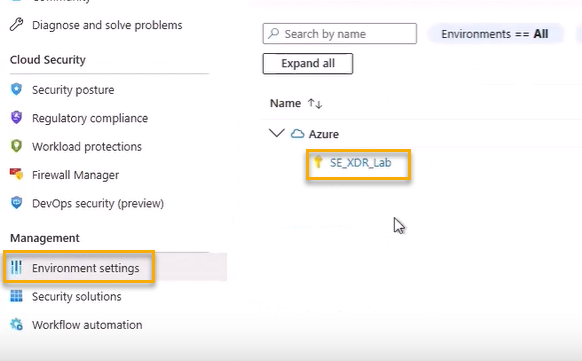
- Select your subscription.
If you're setting up for the first time, set Severs and Storage to On, then click Save.
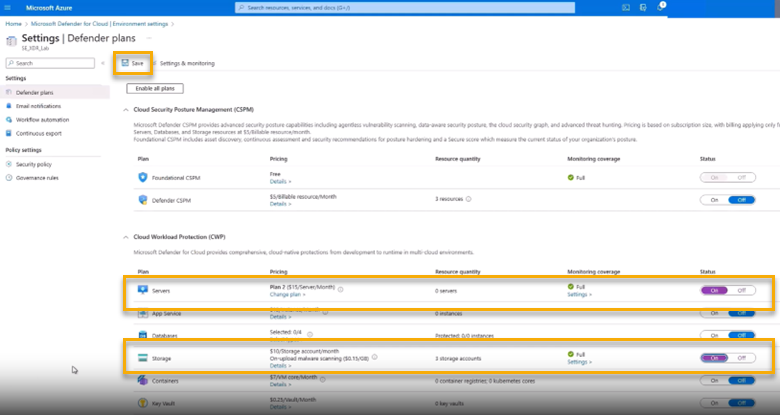
Under the Settings section, click Continuous Exports.
Do the following:
Select the Security recommendations checkbox, and select All recommendations.
In Security Alerts, select Low, Medium, High, Informational.
Turn Streaming Updates on.
Turn Snapshots off.
- In Export configuration, select your subscription.

In Export Target, do the following:
In Subscription, select your subscription
In Event Hub namespace, select the name of your activity log.
In Event Hub name, select the name of your activity log.
In Event hub policy name, select the name of your activity log.
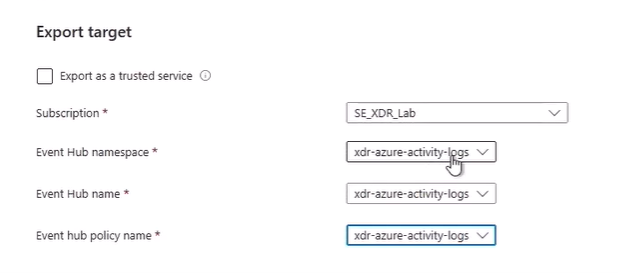
- Click Save.
Part 3: Barracuda XDR Dashboard Setup for Microsoft Azure
To set up Barracuda XDR Dashboard Setup for Microsoft Azure
- In Azure, click Event Hubs, then click one of the activity logs.
- Click Event Hubs, then lick the link of the log.
- Click Shared access policies.
- In the right side, copy the Connection string-primary key.
- Open another browser tab and start Barracuda XDR Dashboard.
- In Barracuda XDR Dashboard, click Setup > Integrations.
- On the Microsoft Azure card, click Setup.
- Select the Enabled checkbox.
- In the Activity Log section, do the following:
- In Event Hub, type the name of the Activity Log.
- In Connection String, paste the Connection string-primary key.
- In Azure, click Home, Storage Accounts.
- Click the link of the Activity Log.
- Copy the name of the Storage Account.
- In Barracuda XDR Dashboard, in Storage Account, paste the name of the Storage Account.
- In Azure , click Access Keys.
- In the key1 section, copy the Key.
- In Barracuda XDR Dashboard, in Storage Account Key, paste the key.
- Repeat steps 1-19 for the rest of the logs.
- Click Save.
